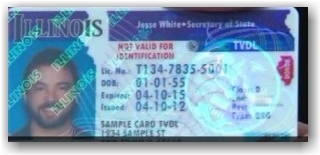Will Driver’s Licenses for the Undocumented be Acceptable for I-9 Purposes?
Wednesday, February 12th, 2014Last October, CA was the 10th state to sign into law driver’s “permits” for undocumented immigrants. In response to an email concerning this topic and whether this would be an acceptable List B document for I-9 purposes, the OSC posted a Technical Assistance letter response a few days ago on its website.
It has been my understanding that the permits will contain language that states that they are not to be used for “federal official purposes,” and will contain a notice on the card that reads: “This license is issued only as a license to drive a motor vehicle. It does not establish eligibility for employment, voter registration, or public benefits. ”
The matter, however, is timely addressed and is a reminder to examine driver’s licenses more closely and read the fine print on the front and back. Here’s a link to the letter that was posted on Feb. 7th. You’ll see it posted under the heading “Fiscal Year 2014.”
Also, here’s an article with an example of the card being used in Illinois stating “not valid for identification” indicated very clearly at the top of the card.
If any of our readers more recently have run across one of these cards presented during the I-9 process, please share with us.

